Text
5 notes
·
View notes
Photo

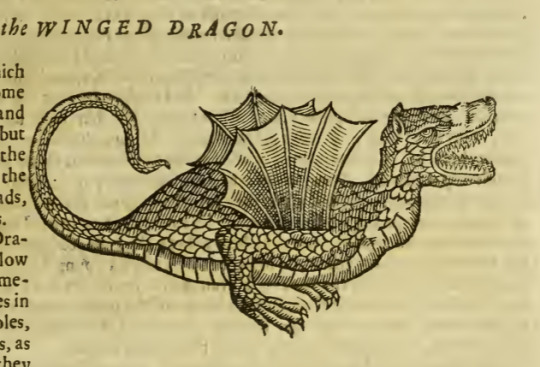








(2 of 2) An assortment of creatures from Edward Topsel’s History of Four-footed Beasts and Serpents, which he wrote in 1607 and 1608, but which wasn’t published until 1658. Most of the book’s illustrations were done by Konrad Gesner, a Swiss scholar. These are my favourites! You can look through the entire book here: https://publicdomainreview.org/collection/topsell-s-history-of-four-footed-beasts-and-serpents-1658
#edward topsel#konrad gesner#animals#beasts#lamia#manticore#tortoise#sea-wolf#sea-serpent#sea-calf#su#dragon#porcupine#rhino
3 notes
·
View notes
Photo
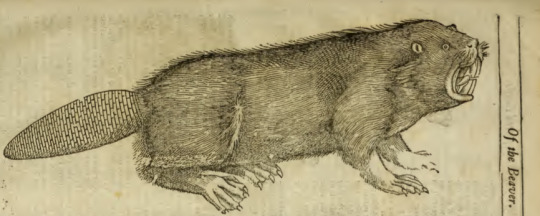
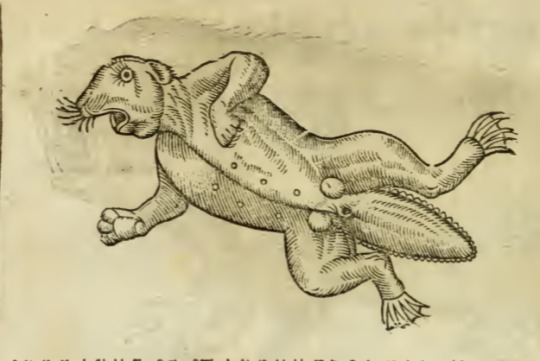
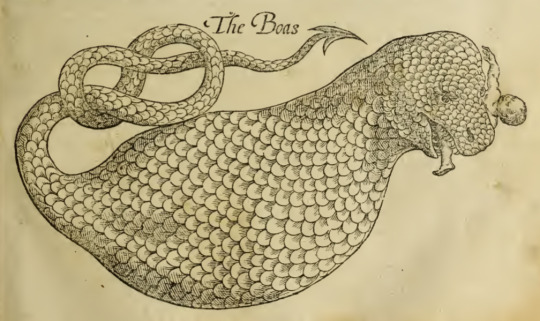



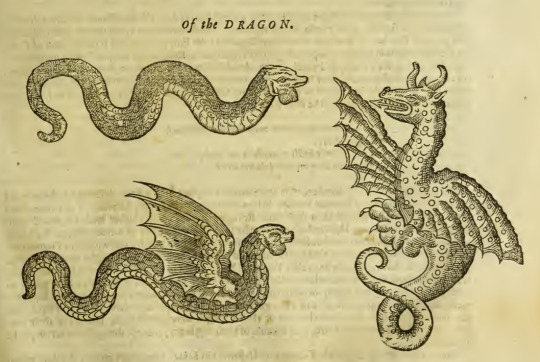



An assortment of creatures from Edward Topsel’s History of Four-footed Beasts and Serpents, which he wrote in 1607 and 1608, but which wasn’t published until 1658. Most of the book’s illustrations were done by Konrad Gesner, a Swiss scholar. These are my favourites! You can look through the entire book here: https://publicdomainreview.org/collection/topsell-s-history-of-four-footed-beasts-and-serpents-1658 (1 of 2)
#beasts#konrad gesner#beaver#camel#boa#cockatrice#deer-goat#dragon#hedgehog#hydra#17th century#edward topsel#public domain#animals
5 notes
·
View notes
Photo
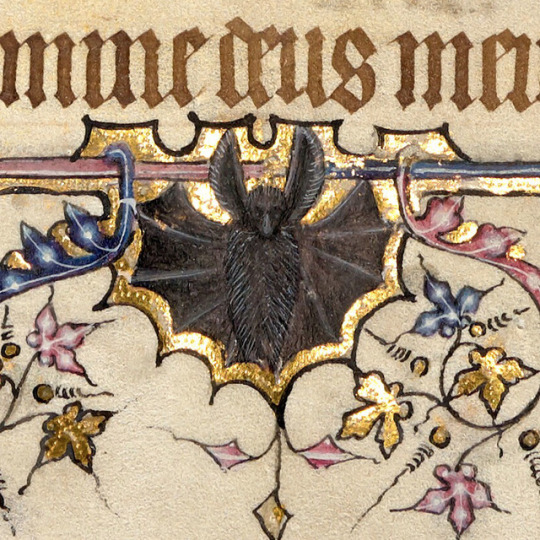
long-eared bat
Psalter, England c. 1360-1400
Bodleian Library, Exeter College MS 47, fol. 21v
14K notes
·
View notes
Photo

canned food
Thüring von Ringoltingen, Melusine, Germany 1468
Nürnberg, Germanisches Nationalmuseum, Hs 4028, fol. 93v
633 notes
·
View notes
Photo

resurrection of the dead
book of hours, Bruges ca. 1440
Besançon, Bibliothèque municipale, ms. 151, fol. 54v
877 notes
·
View notes
Photo

wild unicorn
Thomas of Cantimpré, Liber de natura rerum, France ca. 1290
Valenciennes, Bibliothèque municipale, ms. 320, fol. 71r
721 notes
·
View notes
Text
What does the word 'medieval' make you think of? Comics?
What does the word ‘medieval’ make you think of? Comics?
What happens when you ask a group of thirteen-year-olds about the Middle Ages? Well, their answers include a lot of peasants, castles, and a fair amount of plague and death. What if you ask a group of medievalists (academics who study the Middle Ages)? Unsurprisingly, these answers include manuscripts, Beowulf, Chaucer, saints, etc. (Disclaimer: I was asking people I knew and most of them work in…
View On WordPress
0 notes
Photo

More from the launch party… A wonderful write-up about the exhibition by Andy Oliver at Broken Frontier, as well as the Orbital Comics podcast of the launch party presentation!
1 note
·
View note
Text
Medieval Comics Launch on Storify
Medieval Comics Launch on Storify
//storify.com/beoshewulf/medieval-comics-launch-party/embed[View the story “Medieval Comics Launch Party” on Storify]
View On WordPress
0 notes
Text
Three more works-in-progress by Karrie Fransman…
The Amazons, WIP by Karrie Fransman (2017)
Mélusine, WIP by Karrie Fransman (2017)
Satan’s messenger, WIP by Karrie Fransman (2017)
Read the stories that go with the comics:
The Amazons: warrior queens
Mélusine the half-serpent woman
Satan’s messenger and his helm of invisibility
WIP: Mélusine, the Amazons, and Satan’s messenger Three more works-in-progress by Karrie Fransman... Read the stories that go with the comics: The Amazons: warrior queens Mélusine the half-serpent woman Satan's messenger and his helm of invisibility
#Amazons#comics#female power#hybridity#medieval#Melusine#Satan#Satan&039;s messenger#serpent#women#work-in-progress
0 notes
Photo

Mark your calendars: Medieval Comics exhibition! The Medieval Comics exhibition is scheduled to launch on 23 March 2017 at Orbital Comics.
0 notes
Text
WIP: Mélusine the Half Serpent Woman
WIP by @KarrieFransman: Mélusine the Half Serpent Woman #medievalcomics #medievaltwitter
Work-in-progress by Karrie Fransman Read the story behind this picture in Lydia Zeldenrust’s literary snapshot: Mélusine the Half Serpent Woman.
View On WordPress
0 notes
Text
A comic artist and an art historian chat about medieval comics
A comic artist and an art historian chat about medieval comics
Karrie Fransman (comic artist) asked Dr Robert Mills (Reader in Medieval Art, UCL) to provide some resources about medieval art. Bob is author of Suspended Animation: Pain, Pleasure and Punishment in Medieval Culture (2005) and Seeing Sodomy in the Middle Ages (2015), and his research interests include medieval visual culture, representations of pain and punishment, saints, gender and sexuality,…
View On WordPress
#apocalypse#Arena Chapel#art#Autun#Bayeux Tapestry#Becket Miracle Windows#Bibles moralisées#British Library#Cambridge University Library#Canterbury#Canterbury Cathedral#Cathedral of Saint-Lazare#embroidery#frescoes#gesture#Giotto#Gislebertus#Gospel stories#illuminated manuscripts#Last Judgment#Life of Edward the Confessor#Luttrell Psalter#Macclesfield Psalter#marginalia#Matthew Paris#medieval#narrative art#Ovid#Padua#saints&039; lives
3 notes
·
View notes
Text
WIP: The Green Knight and King Arthur's court
WIP: The Green Knight and King Arthur’s court
Work in progress by Karrie Fransman Work in progress by Karrie Fransman Check out Charlotte Knight’s literary snapshot that inspired these: The green knight.
View On WordPress
2 notes
·
View notes
Text
This is a post by Kathryn Maude (King’s College London and University of Swansea). It’s her ‘snapshot’ of what it means to be human (or not) in the Middle Ages and will feature in Karrie Fransman’s artwork for the Medieval Comics project. Follow Kathryn on Twitter @krmaude.
St Ethelburga from a Book of Hours. France, N. or N. W. (Rouen?), c. 1430- c. 1440. British Library, MS Harley 2900, f. 68v. [bl.uk]
Æthelburg (her Old English name) or Ethelburga (the name that she was remembered by after the Norman Conquest) was abbess of the Anglo-Saxon abbey of Barking. Barking Abbey was a double monastery—a house of worship including both monks and nuns—so Abbess Æthelburg ruled over both men and women.
It was after Æthelburg’s death that her miracle-working really started to get going. The nuns of Barking were in disarray because of repeated Viking attacks, and they had to flee to London, leaving the monastery of Barking and Æthelburg’s tomb completely undefended. When the Vikings arrived to pillage the monastery, the power of Æthelburg’s holiness had called wild animals to protect her tomb.
Wolf from the Bestiary of Ann Walsh. England, 15th century. Kongelige Bibliotek, Gl. kgl. S. 1633 4º, f. 16v. [bestiary.ca]
Bear from the Bestiary of Ann Walsh. England, 15th century. Kongelige Bibliotek, Gl. kgl. S. 1633 4º, f. 13v. [bestiary.ca]
Lion from Jacob van Maerlant’s Der Naturen Bloeme. Flanders, c. 1350. Koninklijke Bibliotheek, KB, KA 16, f. 60r. [bestiary.ca]
First a huge wolf blocked the main door and leapt on the Vikings. They tried another door but were set upon by a vicious bear. The final door to the church was blocked by a lion, roaring at them. They fell to their knees and prayed, at which the three wild animals became tame, and the Vikings entered the church. Instead of pillaging, the Vikings left enough treasure to feed the nuns for months.
Æthelburg made herself known in other ways too. After the Conquest, Abbess Elfgiva had commenced a controversial building project that involved moving the bodies of the abbey’s founding saints—including Æthelburg—which had been specifically forbidden by Maurice, the local bishop. Abbess Elfgiva was praying by Æthelburg’s tomb one night when she felt the tomb move by itself. It crushed Elfgiva against the wall, so she couldn’t move or breathe. Elfgiva cried out to Æthelburg:
Spare me, my lady! I am overwhelmed, I am crushed. I can scarcely draw breath or gasp because of the force of your pressure.
At this prayer, Æthelburg relents and releases Elfgiva but then appears to her in person as a giant glowing figure. She tells Elfgiva:
Make haste to take us from here and set us in the place you have prepared. This lodging oppresses us; the narrowness of the place binds us tightly; the coarse couch dishonours us.
Elfgiva meekly agrees, and the giant glowing figure of Æthelburg turns into a little girl and jumps into Elfgiva’s arms, to thank her for her support.
For the writings of Bede (673-735) concerning Æthelburg and Barking, see Bede’s Ecclesiastical History of the English People, Book 4, Chapters 6-10 (available on Fordham University’s Medieval Sourcebook).
Æthelburg (or Ethelburga): saint, abbess, badass This is a post by Kathryn Maude (King’s College London and University of Swansea). It’s her ‘snapshot’ of what it means to be human (or not) in the Middle Ages and will feature in Karrie Fransman’s artwork for…
#abbess#Anglo-Saxon#animals#Æthelburg#Barking Abbey#Bede#Ecclesiastical History of the English People#Elfgiva#Ethelburga#literature#medieval#miracles#monastery#saints#Vikings
4 notes
·
View notes
Photo
I love it!

Sealed with a kiss
This discovery about a secret Viking message is special - and will put a big smile on your face. For years researchers have tried to crack a Viking rune alphabet known as Jötunvillur. It is found in some 80 inscriptions, including the one above, which dates from the 11th or 12th century. Recently the news broke that a runologist in Norway was successful. It turns out that you had to replace the rune character with the last letter of the sound it produced. So the rune for “f”, which was pronounced like “fe”, represented an “e”. And so researchers were able to decode the 900-year-old message on the piece of wood above, which turned out to be - wait for it… - “Kiss me”! It gets better, however. It turns out that coding and decoding such messages was a playful game, a leisure activity. This is clear from the fact that some of the inscriptions invite the reader to solve the code, stating for example “Interpret these runes.” This, of course, makes the discovery of the “Kiss me” message even more sensational. The kiss was no doubt the reward for the successful individual who cracked this particular message. Two Viking lovers entertaining themselves with a playful coding game - that came with a delightful climax. Awesome.
More information: this Norwegian article originally reported the story, which is also the source of the image (made by Jonas Nordby, the researcher who cracked the code). I picked up the story from the invaluable Medievalists blog (here).
28K notes
·
View notes